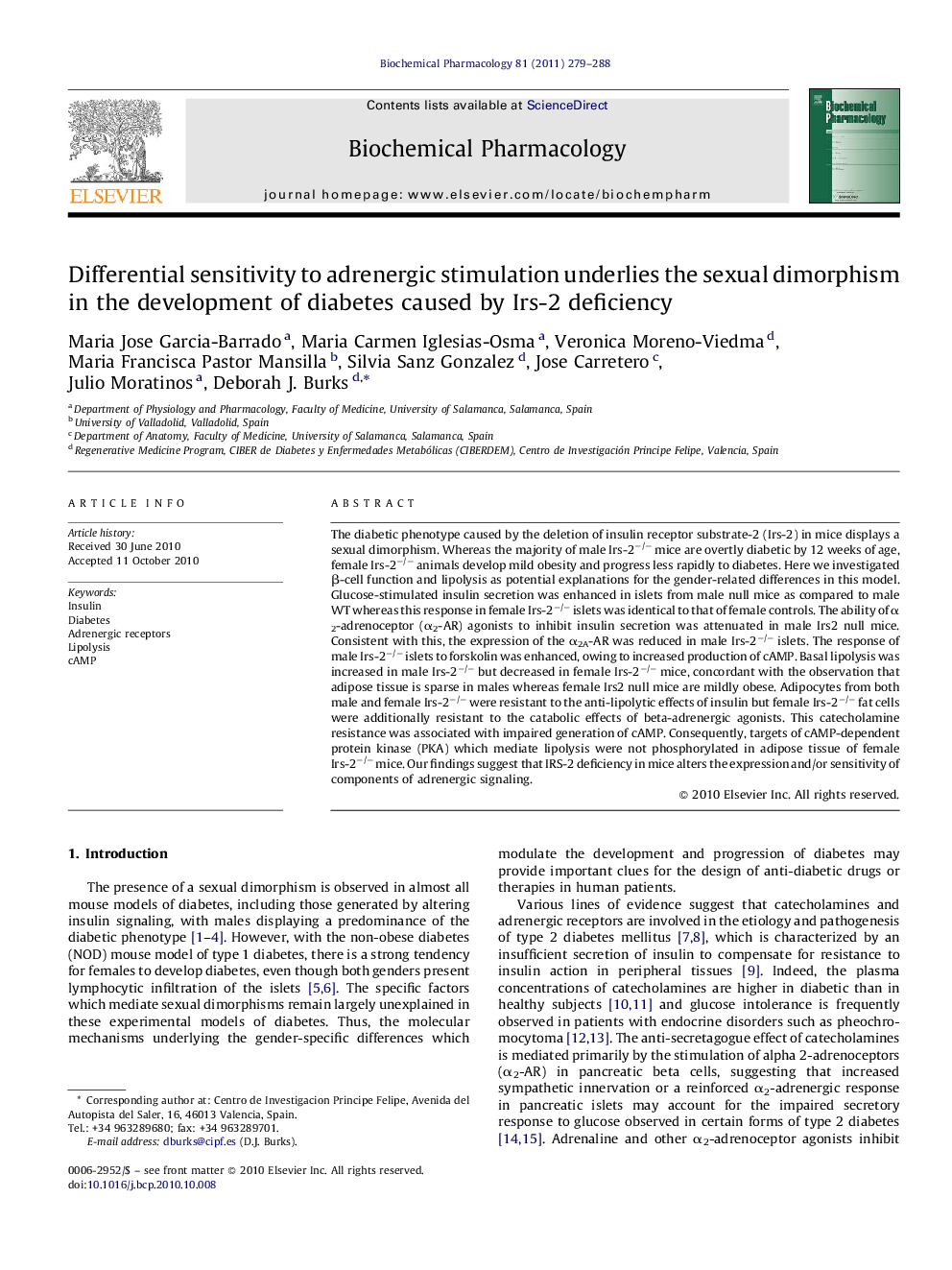| Article ID | Journal | Published Year | Pages | File Type |
|---|---|---|---|---|
| 2513009 | Biochemical Pharmacology | 2011 | 10 Pages |
The diabetic phenotype caused by the deletion of insulin receptor substrate-2 (Irs-2) in mice displays a sexual dimorphism. Whereas the majority of male Irs-2−/− mice are overtly diabetic by 12 weeks of age, female Irs-2−/− animals develop mild obesity and progress less rapidly to diabetes. Here we investigated β-cell function and lipolysis as potential explanations for the gender-related differences in this model. Glucose-stimulated insulin secretion was enhanced in islets from male null mice as compared to male WT whereas this response in female Irs-2−/− islets was identical to that of female controls. The ability of α 2-adrenoceptor (α2-AR) agonists to inhibit insulin secretion was attenuated in male Irs2 null mice. Consistent with this, the expression of the α2A-AR was reduced in male Irs-2−/− islets. The response of male Irs-2−/− islets to forskolin was enhanced, owing to increased production of cAMP. Basal lipolysis was increased in male Irs-2−/− but decreased in female Irs-2−/− mice, concordant with the observation that adipose tissue is sparse in males whereas female Irs2 null mice are mildly obese. Adipocytes from both male and female Irs-2−/− were resistant to the anti-lipolytic effects of insulin but female Irs-2−/− fat cells were additionally resistant to the catabolic effects of beta-adrenergic agonists. This catecholamine resistance was associated with impaired generation of cAMP. Consequently, targets of cAMP-dependent protein kinase (PKA) which mediate lipolysis were not phosphorylated in adipose tissue of female Irs-2−/− mice. Our findings suggest that IRS-2 deficiency in mice alters the expression and/or sensitivity of components of adrenergic signaling.
Graphical abstractFigure optionsDownload full-size imageDownload as PowerPoint slide
